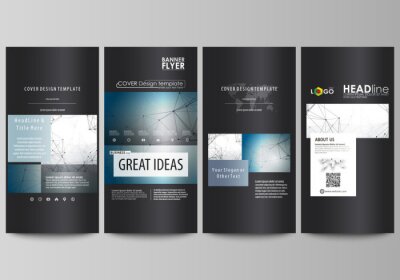Flyers And Posters In Malaysia
Designing effective flyers and posters is essential for promoting events, businesses, products, or services. Both mediums share similarities in design principles but differ in size and purpose.
Flyers:
Define Your Goal:
- Clearly understand the purpose of your flyer. Are you promoting an event, a sale, a new product, or providing information?
Know Your Audience:
- Tailor your message and design to your target audience’s preferences and interests.
Simple and Clear Headline:
- Your headline should be concise and attention-grabbing. It should clearly communicate the main message.
Eye-Catching Visuals:
- Use high-quality images or graphics that relate to your message. Visuals should support your content without overwhelming it.
Use White Space:
- Ensure there’s enough white space to keep the design clean and uncluttered. White space helps important elements stand out.
Typography:
- Choose easy-to-read fonts for your text. Make use of typography hierarchy with different font sizes and styles for headings, subheadings, and body text.
Color Scheme:
- Select a color palette that aligns with your brand or event. Use colors strategically to create emphasis and consistency.
Call to Action (CTA):
- Include a clear and persuasive call to action. Tell the reader what you want them to do, such as “Visit our store today” or “Register now.”
Contact Information:
- Provide essential contact information, including phone numbers, email addresses, and website URLs.
QR Codes:
- Consider using QR codes that lead to online resources or special offers.
Legible Printing:
- Ensure that the flyer is designed with the final printing in mind. Verify that the fonts and colors translate well to printed material.
Distribution Strategy:
- Plan how you will distribute your flyers, whether it’s through direct mail, handouts, or digital channels.
Posters:
Size and Dimensions:
- Posters are typically larger than flyers. Determine the size and dimensions suitable for your display location.
Visual Impact:
- Posters need to grab attention from a distance. Use bold, large-scale visuals and typography to achieve this.
Hierarchy of Information:
- Organize your content with a clear hierarchy. Key information should be prominent and visible from a distance.
Brand Identity:
- Maintain consistent branding elements such as logos, color schemes, and fonts.
Visual Contrast:
- Use contrast to create visual interest. Contrast in colors, fonts, and imagery can make your poster more dynamic.
Simplicity:
- Keep the design clean and uncluttered. Avoid excessive text and visual distractions.
Lamination or Protection:
- Consider using lamination or protective coatings to ensure the poster’s durability, especially for outdoor displays.
Poster Stands or Frames:
- Think about the physical display of the poster, whether it’s on a wall, in a frame, or on a stand.
Testing and Proofing:
- Print a small version of your poster for proofing and ensure that it looks as intended.
Printing Quality:
- High-resolution printing is crucial for posters, especially when they are larger in size. Use professional printing services for the best results.
In both flyers and posters, the message should be clear, concise, and aligned with your goals.

